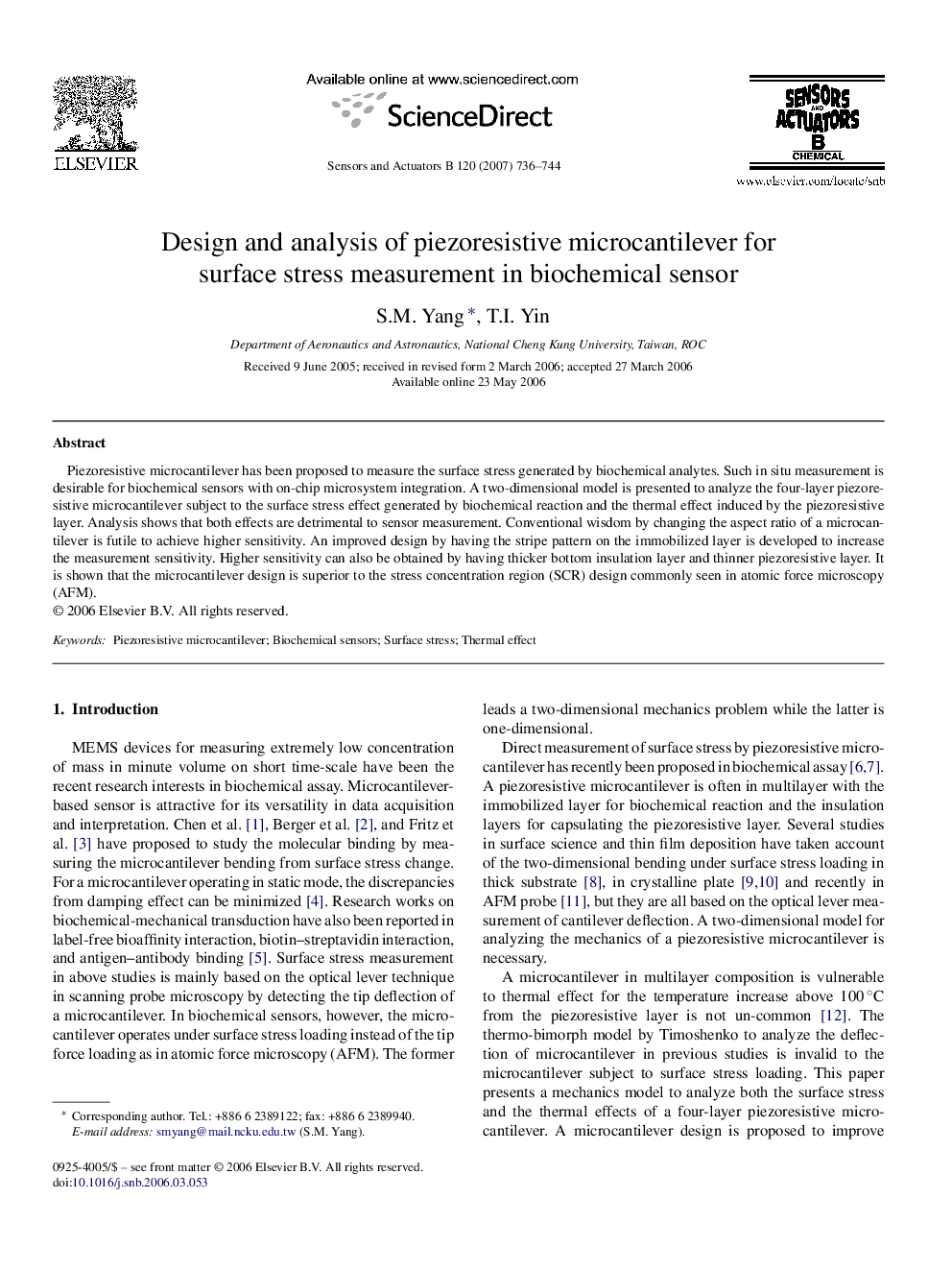| Article ID | Journal | Published Year | Pages | File Type |
|---|---|---|---|---|
| 744897 | Sensors and Actuators B: Chemical | 2007 | 9 Pages |
Piezoresistive microcantilever has been proposed to measure the surface stress generated by biochemical analytes. Such in situ measurement is desirable for biochemical sensors with on-chip microsystem integration. A two-dimensional model is presented to analyze the four-layer piezoresistive microcantilever subject to the surface stress effect generated by biochemical reaction and the thermal effect induced by the piezoresistive layer. Analysis shows that both effects are detrimental to sensor measurement. Conventional wisdom by changing the aspect ratio of a microcantilever is futile to achieve higher sensitivity. An improved design by having the stripe pattern on the immobilized layer is developed to increase the measurement sensitivity. Higher sensitivity can also be obtained by having thicker bottom insulation layer and thinner piezoresistive layer. It is shown that the microcantilever design is superior to the stress concentration region (SCR) design commonly seen in atomic force microscopy (AFM).
